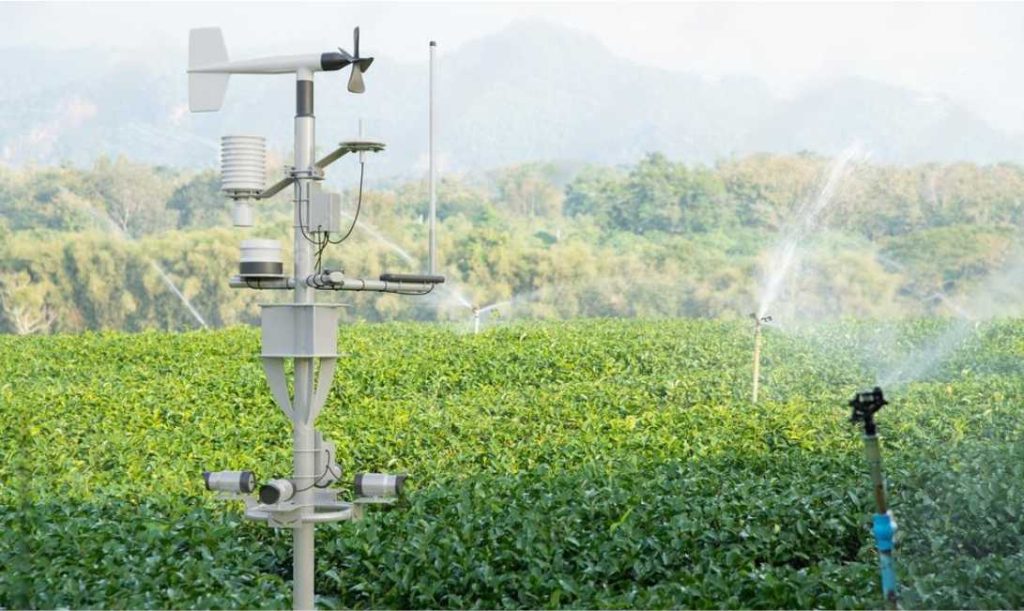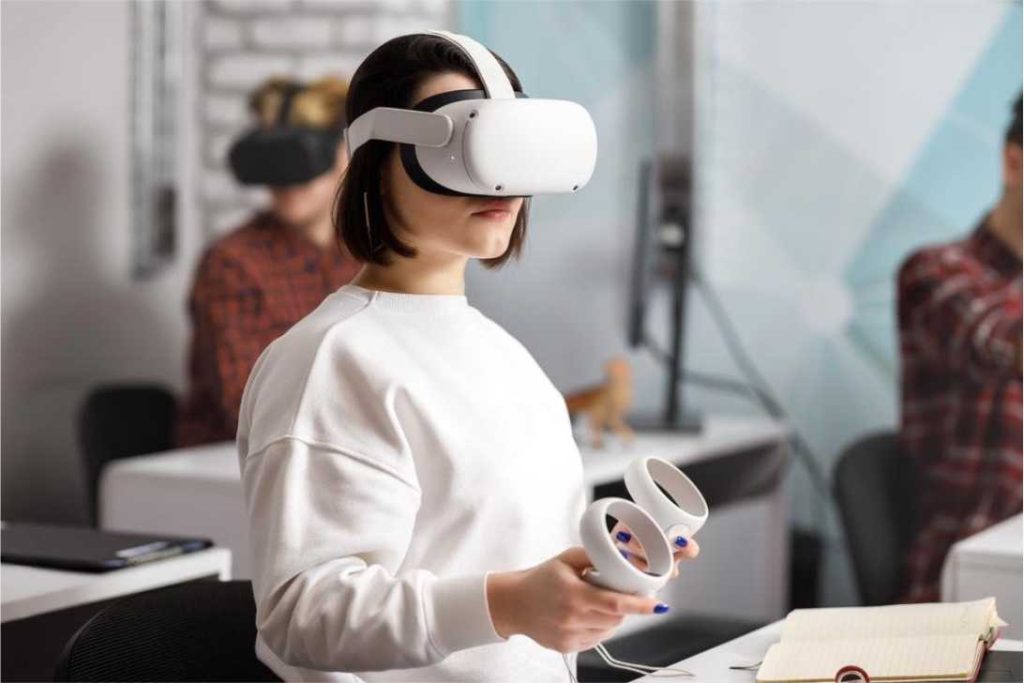As the Internet of Things (IoT) continues to evolve, an increasing number of devices connect online. However, what implications does this hold for various markets and our everyday lives?
The potential reach of the Internet of Things (IoT) is virtually boundless. From homes and vehicles to household appliances and even pets, an extensive network of interconnected devices is emerging, and this trend is poised for significant growth in the coming years. The goal of 50 billion connected devices around the world is getting closer. By the end of 2025, the International Data Corporation (IDC) predicts a staggering 55.7 billion connected IoT devices or “things” by 2025. This raises the question of what innovative ideas will emerge in a world where everything is seamlessly interconnected.
Globally, a vast array of interconnected devices now spans terminal hardware, humans, animals, and even plants, all seamlessly integrated into the internet via a complex network of sensors, connectors, and other interconnection technologies. By “stitching” together the physical and digital worlds, we continuously connect objects, people, and processes, allowing for intelligent perception, identification, and management.
This universal connection is blurring the line between the physical and digital worlds. But what does this mean for the future?
The Expanding Role of the Internet of Things
The IoT technology empowers objects globally that previously lacked computing power to perform computing, sensing, and transmission functions. It facilitates secure and uninterrupted data transmission from devices to the cloud, enhancing connectivity and real-time data processing across networks. In the evolving IoT market, the focus has shifted from simply adding connectivity to developing solutions that function as integral components of expansive consumer, industrial, or medical IoT networks.
Within a few decades, the internet has evolved from primarily human-centric to a broader range of entities, including companion animals, such as cats. Connecting a pet to the internet requires only a few simple and accessible components: wireless connectivity, a compact processor, and a perception device, such as a location module or image sensor. These elements work together to create a virtual representation of the pet, seamlessly linked to its real-world counterpart.
As with any IoT application, the fundamental components include perception technology, a communication link to the network, and a localized or centralized processing capability.
At the perception layer, employing various technologies to gather information from the physical environment is crucial. This can range from image or audio sensors to air quality and temperature sensors. For all IoT devices, the application process fundamentally begins with perception.
At the communication layer, wireless connection technology is vital, with various protocols playing a critical role in seamlessly bridging the physical and digital worlds. The ubiquitous wireless connection technology connects everything to the internet. This hyper-connectivity offers numerous benefits, such as enabling automated control, facilitating seamless communication and data exchange among devices, and leveraging this data for informed decision-making.
Within the processing layer, the primary objective is to effectively leverage data processing and analysis technologies to extract meaningful insights from the vast amounts of data generated by IoT devices. This data is utilized to produce valuable insights, enabling efficient digital management and operations, fostering intelligence across various industries, and facilitating industrial progress.
This integration of technologies allows IoT devices to exceed the capabilities of the devices they replace. For instance, by connecting supermarket shelf labels to the internet, all products can be managed digitally, which will transforms the overall operation and management model. In addition, by incorporating wireless connectivity and cloud computing, companies can find innovative ways to drive value into their businesses.
What value addition can IoT make?
Referring to the opening statement, what novel applications and benefits will arise from connecting cats and dogs to the internet?
The most commonly used method to connect cats and dogs to the internet within domestic environments is through smart, wearable devices. For instance, a smart collar not only tracks a pet’s location, but also offers real-time monitoring of vital metrics such as heart rate and other health indicators.
This not only helps pet owners to manage their beloved pets more effectively, but also paves the way for advanced digital and intelligent pet health management systems, creating another significant market opportunity.
According to IDC’s forecast for the smart home market in 2024 and beyond, the development of smart hardware for pets is identified as a crucial factor in driving personalized smart home services. As people become more attentive to their pets, the demand for smart home devices to enhance their pets’ lives is on the rise. This trend will promote the innovative development of pet centric smart devices and also the upgrading of existing smart home devices. Consequently, new functionalities such as pet-oriented cleaning and care solutions will emerge, and personalized service models will be developed to cater to the diverse preferences of different pet species.”
However, the Internet of Things offers much more than just smart collars for pets. According to Statistica, end-users s are projected to spend $1.567 trillion annually by 2025 in IoT-related technologies. As a technological revolution, the IoT has a vast reach and delivers significant value, consistently surprising the industry with new innovations each year. It is fueled by various advanced technologies like 5G, cloud computing, and artificial intelligence, all of which contribute to the rapid acceleration of the Internet of Everything.
People from all walks of life across the globe are embracing IoT technology, aiming to enhance industries and undergo digital transformation. To provide an example, energy companies have adopted IoT technology to interconnect power grids, seamlessly linking power plants and individual households. This integration has led to a substantial enhancement in the efficiency of meter readings.
Furthermore, the rise in popularity of smart wearable products, specifically in the medical and health sectors, has laid the foundation for the progress of digital medicine by establishing a robust data infrastructure. This trend is already starting to transform the way we treat health care, extending the influence of hospitals well beyond their physical boundaries. At the same time, IoT is being widely embraced in agriculture to ensure a robust and premium food supply chain. This technology enables precision farming, real-time monitoring of crops and livestock, and efficient resource management – all contributing to enhanced productivity and sustainability in the agricultural sector (Figure 1).
AI and IoT Driving Virtual to Real-life Interactions
Looking ahead, as the integration between the digital and physical worlds continues to deepen, the resulting virtual-real fusion will have a profound impact on numerous industries. This transformation is poised to alter the rules of the game across many sectors permanently.
The increasing presence of the metaverse concept in the recent years is a significant response to the rapid growth of the contemporary digital landscape. While the precise definition of the metaverse remains unclear, there is a broad consensus that it represents a diverse and expansive technical landscape. The potential for diversification within the metaverse is significant in the future.
The driving force behind the metaverse lies in the integration and aggregation of advanced technologies such as the IoT, blockchain, Augmented and Virtual Reality (AR/VR) (Figure 2), network communications, and Artificial Intelligence (AI). As these technologies reach maturity, their confluence gives rise to a new internet ecology, transforming digital interactions and environments..
The past couple of years have been incredibly significant for AI. Integrating large AI models and generative AI tools is set to enhance the precision and authenticity of human-computer interactions. This advancement will enable seamless voice, visual, and perceptual interactions, leading to a remarkable improvement in the overall user experience across various scenarios like home, work, and manufacturing. These advancements will significantly improve the coverage and accuracy of voice and visual interaction, driving a more intuitive and efficient digital experience
Additionally, a deeper understanding of user behavior will drive advancements in IoT-enabled environmental intelligence, leading to enhanced screen interaction experiences and improved sensor interaction capabilities.
Key Areas of Growth

(Source: kinwun /stock.adobe.com)
According to IDC, the IoT market investment is primarily driven by IoT services and hardware sectors that hold a dominant position in technology trends. Additionally, the IoT server market is predicted to witness significant growth as industries adopt IoT applications, and the demand for IoT data analytics software is also expected to flourish due to the rapid development of IoT device data.
In terms of industries and application scenarios, manufacturing-related production asset management will emerge as the primary investment focus in the IoT market over the next five years. Given the immense repercussions of the pandemic, the digital transformation of supply chains in agriculture, retail, transportation, and manufacturing has gained traction and will continue to improve the production, storage, and delivery of goods.

Conclusion
IoT-related technologies, such as comprehensive perception, remote monitoring, intelligent control, wireless connectivity, and cloud analysis, are being seamlessly integrated into various sectors across industries. These advancements will result in lasting improvements in efficiency by ensuring consistent product and service quality and decreasing costs and resource consumption. In addition, these technologies will help to drive the transformation of traditional industries into a new era of intelligence and digitalization from multiple perspectives.












